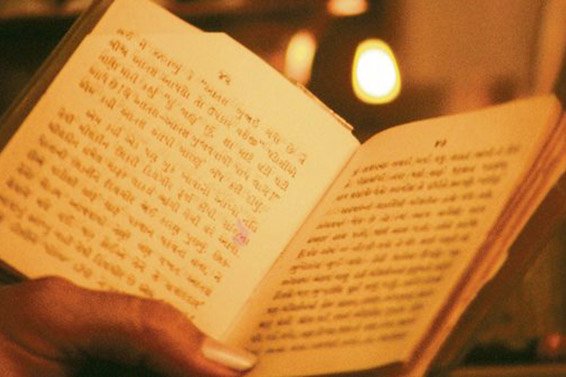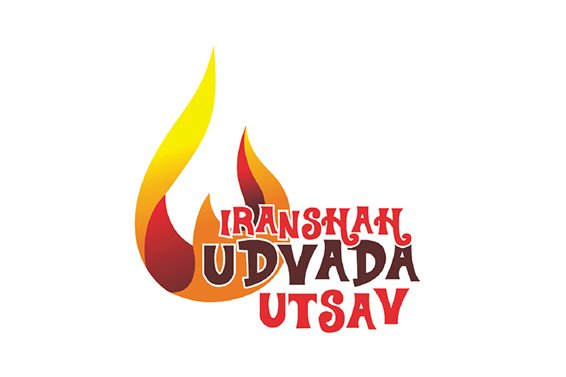Preserving the Parsi-Gujarati language
- A Russian linguist is chronicling a dialect of Parsi-Gujarati before it dies out
- India’s Parsi community is a small one, numbering to about 57,000 people
Anton Zykov snaps open his laptop and sifts through the video files. He opens one of a Parsi man showing him around a burial ground in Navsari, talking to the camera in Gujarati as he leads the way. “Here, he is talking about the construction of the ground, how they purify the body,” explains Zykov, during a meeting at an Irani café in Mumbai. “The way he speaks would be typically associated with his profession”.
Zykov, a Russian national, is a Sorbonne University scholar at the Institut National des Langues et Civilisations Orientales (Inalco). He has spent two-and-a-half months making such recordings in an effort to capture the variations and vibrancy of Parsi-Gujarati—a form of Gujarati unique to India’s 57,000-odd Parsi community.
“Parsi-Gujarati (or I would call it simply Parsi) is a separate language and it is endangered,” he says. “I am documenting Parsi colloquial speech, which I believe is a separate language, different from standard Gujarati, and has its own unique morphology, syntax, lexical and other features.”
When Zoroastrians arrived in India between the eighth and 10th centuries AD, fleeing persecution in Iran, they were given refuge off the coast of Gujarat, and, according to legend, promised that they would assimilate. They adopted the local language and some local habits while retaining their religious distinctiveness. Now, as their numbers dwindle, as they intermarry and settle abroad, with younger generations sundered from their heritage, the threat of language erasure is increasingly becoming a reality. “…they would lose a bunch of oral culture, the munajats (Parsi popular devotional songs), the kahavaten (sayings), the galliyan (swear words). All this,” says Zykov, lapsing into a showy touch of Hindi, “kafur ho jayega(will vanish).”

Often, it’s easy to get a person talking, especially if they have a story to tell or if it’s about their work and topics are readily available. “If it’s a professional context, I go to a wine shop, he talks about this booze, that booze, chickoo booze,” says Zykov. “At a bakery, he would talk about biscuits and the variety he has.”
The goal is to document words specific to certain aspects of culture, religion or the Parsi way of life, not every single word. “Someone can do a full-scale dictionary, but that would not be that exciting. It would be the same as doing a New Zealand English dictionary or a Belgian French dictionary,” he says. “There would be different words and these dictionaries exist, but it would not be super exciting.”
Similarly, Gujarati dictionaries exist, but, ultimately, whether or not Parsi-Gujarati is a language or a dialect is a matter of debate. “The question of what is dialect and what is language is more of a social and political notion,” he says.
So what are the technical and linguistic variations that set apart the two tongues? In terms of phonetics, for instance, Parsis would use dental consonants compared to retroflex ones. So a Gujarati would say pani (with a hard n) but a Parsi person would say pani (with a soft n). Or a Gujarati speaker would say “tame su karo cho?” (what are you doing?), and a Parsi speaker would say “tame su karoch?“. Though Parsi speakers might believe it is a sweeter version, Gujarati speakers consider it more impure.
Even within Parsi-Gujarati, there are variations, not just between urban and rural centres, but between the first wave of refugees (Parsis) and the later 19th and 20th century ones (Iranis). Being more recent, Irani speakers retain the lingering aftertaste of Zoroastrian Dari, or Gavruni, with vestigial elements persisting in some swear words or colloquial words. “In the third generation, they would switch to Gujarati but still some would have the reminiscence of the language they came with,” he says. “Some features distinguish Irani speech in Gujarati from Parsi speech. Iranis would use some code words that are distinctive; for example, chom for bhonu (food). One distinguishing feature (of Parsis) would be a worse knowledge of syntax in Gujarati in the sense they would sometimes make mistakes in the use of the three genders: neuter, masculine and feminine.”

Zykov’s next step will be to record Parsi-Gujarati speakers in the remaining cities with a significant Parsi population—mainly Secunderabad, Jamshedpur, Bengaluru and Kolkata. Once he is done with fieldwork, he will move to transcribing, translating, annotating and then processing this data through speech analysers to understand the nature of the sounds. “It’s important to preserve language, and his is a significant effort,” says Shernaz Cama, director of the Parzor Foundation, a non-profit focusing on Parsi culture and heritage. “A language dying is a marker of a culture dying. Many of our children no longer speak it, so it could be lost forever.”
Zykov is fluent in Hindi, a language he first studied at school in Russia, and, more recently encountered during a work stint at the Russian embassy in Delhi. He also knows French, Persian, English, Russian and Hebrew, but arrived for his fieldwork with virtually no knowledge of the language he needed most: Gujarati.
For his MPhil in modern South Asian studies at the University of Oxford, Zykov studied the history of khandias or nasusalars(Parsi corpse-bearers). For his PhD, he turned to the minority group again, being familiar with their history and habits. “I really love the community,” he says, “and what I value is their ability to be pluralistic and critical of themselves, to have free debates in the community and an academic openness.”
With his blond curls and foreign accent, he clearly stands out as non-native. “There is a postcolonial critique of what I’m doing. I’m a foreigner working on an Indian language. Obviously, I’m bringing my background and education and the way I understand linguistics to what I do,” he readily concedes. “Unfortunately, there is so far no Parsi person doing it and I bet they would do it better than I would, but sometimes being an outsider helps. Sometimes, teachers who are non-native speakers and have learnt the language this way, know how to acquire language.”
Press him further on his motivations, and it leads to a circular conversation. “Let me ask you, what is a good reason according to you for doing this?” he counters. “Why are you a journalist? Why do you enjoy it? So the ultimate answer is just like that. It is something that is inscrutable. I’m just interested in the Parsi community and linguistics.”





